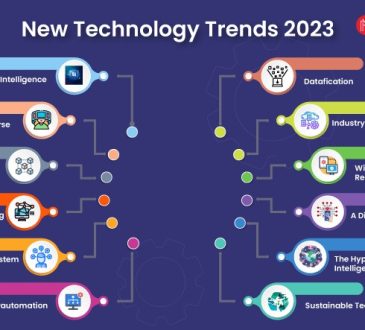6 Benefits of Tech Automation for Business Process
Several companies in this digital age view automated systems as essential. Fast technological advancements and ongoing changes in client expectations are the main causes of this. Automatic processes are quick, dependable, and effective. As a result, they are frequently employed in several industries, including banking, healthcare, and finance. Several companies look for new automation technologies like UI automation in order to fully the benefits of tech automation. Let’s follow us to find out about the benefits of tech automation in this post!
What is Business Process Automation?

Business process automation is fundamentally a means to employ software to change some crucial processes. The process will be thoroughly documented by developers, at which point it can be converted into a set of guidelines that are relevant to the field of technology. These guidelines and patterns have a successful track record for the business. No matter how skilled or knowledgeable an individual is, the automated processes are followed evenly as a result.
Benefits of Tech Automation for Business Process
More Efficient Workflows
Your organization’s total efficiency is significantly impacted by automation. As RPA can readily complete these repetitive activities, automation eliminates them. Bots in RPA come in two flavors: attended and unsupervised. Attendant bots require human control and interaction. For processing data, calculations, reporting, and notifications, these bots are helpful. Unattended bots, on the other hand, run automatically and without the need for human intervention.
These bots can perform a variety of tasks, but their ability to work continuously improves workflow efficiency. Design activities can be completed more quickly and easily in this workflow since these two types of RPA bots and automated systems reduce unforeseen human delay and error and allow for uninterrupted work.
Higher Productivity
Employee productivity is increased by automation because it eliminates tedious and repetitive work. Employee concentration shifted from repetitive calculating jobs to more complicated tasks as a result of the RPA and automated system combination. This enables the workers to work more intently on their tasks. Employee productivity rises in this focused office environment, which results in more effective work. Moreover, automated systems shorten task completion times since some tasks are easier and quicker for bots to accomplish than for people.
With this kind of process, humans hold greater administrative roles and have control over the outcomes obtained by bots. As a result, businesses are able to develop more successful products and offer better service due to an increase in overall workflow and employee efficiency.

Speedier Reaction
It is possible to optimize the flow of information throughout the manufacturing, service, and payment processes, among others, by removing pointless operations and realigning the process steps.
The time it takes to complete jobs is significantly decreased with the adoption of service automation, and some operations that were previously completed by specialists can be simply substituted by the system. These changes to the processes enhance operational effectiveness and speed up employee and customer response times.
Guarantees Compliance
Corporate governance models link expectations for management to the day-to-day operations of organizations. However, it is impossible to enforce policies, guidelines, and legal and regulatory requirements without first integrating compliance procedures into the company’s culture.
Everything that is done with service automation complies with the specified standards. Every activity made on an electronic platform is documented for later review in a history that may also be used in audits in the future.
Lower Operating Expenses
Executing manual business processes demands a large investment of both money and labor. Yet, automating some laborious and time-consuming tasks could help reduce the number of resources that must be allocated to particular tasks, including labor costs. By automating some error-prone business processes, the danger of human error, which results in significant organizational resource waste, can also be decreased.
Business process automation can also help your company accomplish more in less time, which will ultimately increase organizational profitability. So, it can be said that hyper-automation has a number of advantages and can lower operational expenses.
Effective Workforce Divisibility
Hyperautomation can improve the firm’s division of labor for a particular task. It is easier and quicker to establish a workflow using automated systems that determines which teams should collaborate with the team and when they should report to their management. This improves efficiency and communication across various teams.
Also, with the aid of bots, employees may more easily be assigned to the occupations they prefer, which raises employee morale and improves workflow efficiency. So, the assistance of automated technologies and RPA bots makes workforce division more effective. Employee efficiency and productivity are raised, and additional resources are not needed for process planning.

How does software for business process automation function?
A business process is a series of actions carried out in a particular order to accomplish a task. As a result, the first stage is to specify the objective and the steps that must be taken to get it. You can configure automation rules for each phase and the particular triggers that start them using business process automation software.
Take an annual report as an example. In Denmark, the CEO and the board of directors must sign the annual reports before the auditor can do so. The ability to design a document routing workflow based on the roles of the signers is provided by business automation software. The CEO and board members will receive the material automatically thanks to the technology. The system will then automatically submit the report to the auditor for final signature when they have both signed.
Since there are several signers and their signatures must be placed in a precise order, gathering signatures for annual reports is a time-consuming operation. Companies can sign their annual reports without delays on the same day by automating the procedure.






